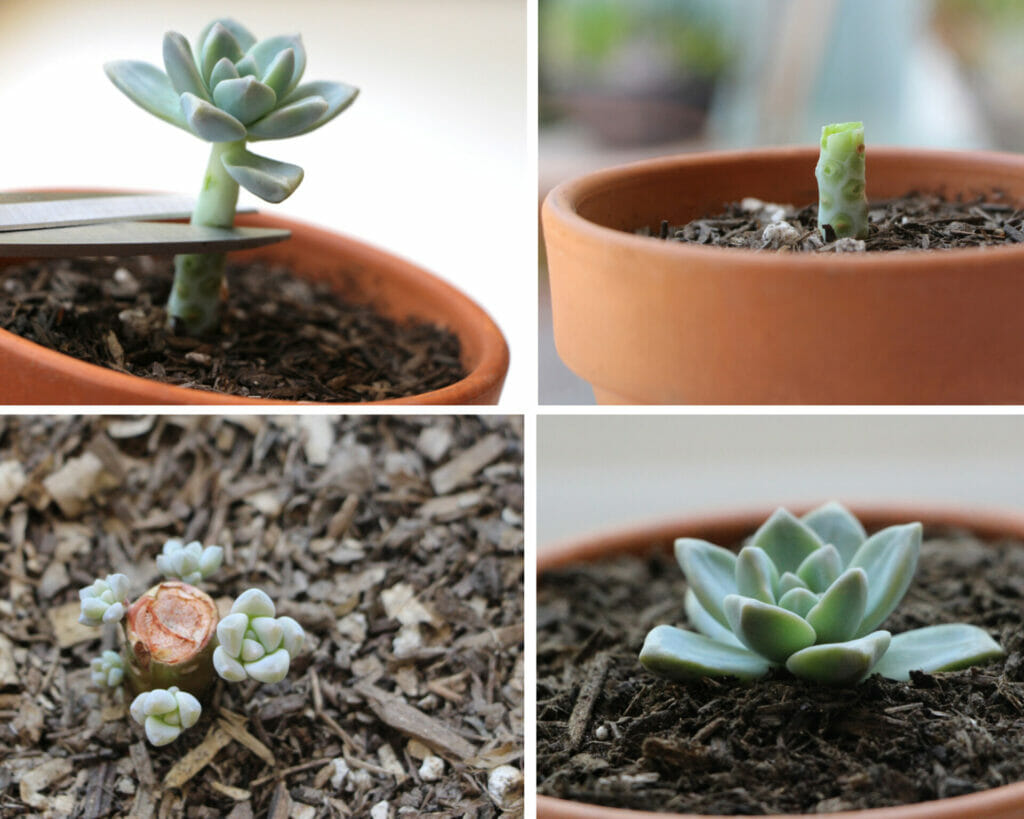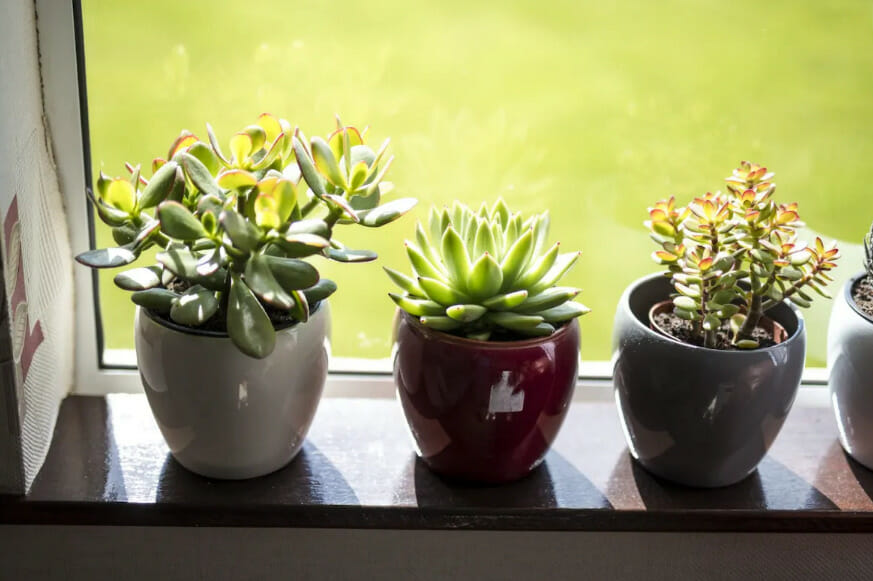Succulents are one of the most loved plant species due to their cute small size and versatility in colors. They are very easy to care for, so anyone looking for something to start their gardening journey should go for succulents. However, succulents being low-maintenance doesn’t mean you shouldn’t keep a check on their basic requirements. Sometimes the succulents start to get too long, i.e., leggy, and you just wonder what to do with these leggy succulents.

What are Leggy Succulents?
Succulents need sunlight to thrive properly, and when they are kept indoors in low-light areas, they undergo the process of etiolation. The stem gets elongated and stretches upward. Sounds strange, no? Because these plants try to get as close to sunlight as possible, their overall shape looks tall, known as leggy succulents.
Want to know about leggy succulents, their reasons, and what to do with Leggy succulents? Let’s dig further!
Why Are My Succulents Getting Leggy?
As mentioned, succulents grow tall and leggy when they get insufficient light. You will first see the succulents slowly bending towards the light source. But soon, they will grow longer and longer, increasing the distance between leaves. Once the etiolation happens, the succulents lose the intensity of their fresh green color, and the leaves also look rough and small.
However, if you want to detect the leggy succulents earlier, notice the shape of their leaves. If the leaves are curling backward, it means your beautiful leafy friends are at risk of etiolation.

Related Article: How to Keep Succulents Alive Indoors? Beginner’s Guide
How to Save Your Leggy Succulents?
If you need an honest opinion, leggy succulents won’t return to their original compact form, but you can try cutting them a little and start the propagation process again. Here’s what to do with Leggy succulents:
First of all, remove the leaves from the bottom and cut the stem. Make sure you cut the entire leaf because if the leaf is ripped during cutting, it will not grow roots. Moreover, a small rosette with a long stem will be left after removing leaves. Cut the stem with the head of succulents.
Propagate Leaves
The leaves removed from the bottom of the leggy succulent can be propagated in simple steps to show new growth.
Step 1: The first step in treating leggy succulents by propagating from leaves is the removal of healthy bottom stems and leaves. Carefully clean the leaves and make sure not to tear them apart.
Step 2: Once you are done cutting roots and leaves, allow them to dry until the cutting ends have been calloused.
Step 3: Now place the removed leaves in a saucer or tray and away from the sun. Pour soil and water onto the leaves, but be careful and avoid drenching them. A little moisture is enough!
Step 4: Wait for a month or more, and you will soon see the roots growing from the leaves.
Step 5: You can remove the withered leaves and plan the new growths with roots in the soil.
Step 6: Once you have replanted the roots and the succulent is growing, keep it near sunlight. If there is insufficient sunlight indoors, try placing them near windows or buy an artificial light source to avoid ending up with Leggy succulents.

Propagate Original Plant
After removing the bottom leaves, you are left with a little rosette with a long stem. We can propagate the original plant to recover the etiolation.
Step 1: Cut the stem with the head of the succulent. Now we have a bunch of leaves, a stump, and a cute little plant with a short stem.
Step 2: After cutting, let the ends dry out and callous over. This may take a few days or a week.
Once you feel the ends are dry enough, you can place them on top of some well-draining cactus or succulent soil.
Step 3: Place the stem in well-draining soil when the ends become dry enough. Place the stems deeper in the soil for planting the stem so they can grow quickly.
Step 4: If the stems are a little longer than your pot, trim them 1 to 2 inches of the stem base.
Step 5: After a few weeks, you will notice new growth from the stem.
Step 6: Give the new babies a good watering session when the soil becomes dry.

How amazing is succulent propagation? You can get a lot of new plants with just leaves or stems
Tips to Prevent Succulents from Getting Leggy
If you want your succulents to be fully healthy and fresh, try following the below-mentioned tips:
- Give them Enough Light
It doesn’t matter how much emphasis we put on it, but good light is essential for your succulents. Otherwise, the succulents start showing signs of being leggy and stretched. On average, succulents need about 4 to 6 hours of continuous light, and if you fail to provide that, they will grow with a dull outlook.
Do you know succulents need light, but direct sunlight can be harsh on them? So, to prevent the over-lighting, place them where there is plenty of light but the succulents aren’t in direct sunlight.
- Turn the Succulents Around
Don’t forget to turn your succulents around timely to avoid an uneven structure. If you keep one side in too much light, it will lean towards the light source, resulting in a plant that falls on one side. Turning the succulents every few days at regular intervals will keep them fresh and well-supported.
- Don’t Over-Fertilize
Another tip to stop your succulents from getting leggy is to provide them with adequate fertilizers. Succulents don’t need a lot of fertilizers, and when you over-fertilize them, it does more harm than good.
Therefore, fertilize your beautiful succulents only once a month, especially during the growing season. Keep the quantity well-measured and controlled while doing so.

After propagation, you will need new pots for planting the new growths.
Related Article: Ceramic Pots for Succulents: 15 Beautiful Options of 2022
Final Thoughts
Succulents are lovely and tough plants. For starters, these small and colorful plants are nothing less than a miracle as they help learn all the gardening secrets without having a dead plant. However, sometimes they turn leggy due to light deficiency, which also makes them colorless.
Replanting and giving them light is the perfect solution to this issue. We hope this article provides you with detailed insight into what to do with Leggy succulents and the reasons behind succulents etiolation. Have a wonderful gardening experience! And follow our website for more articles
